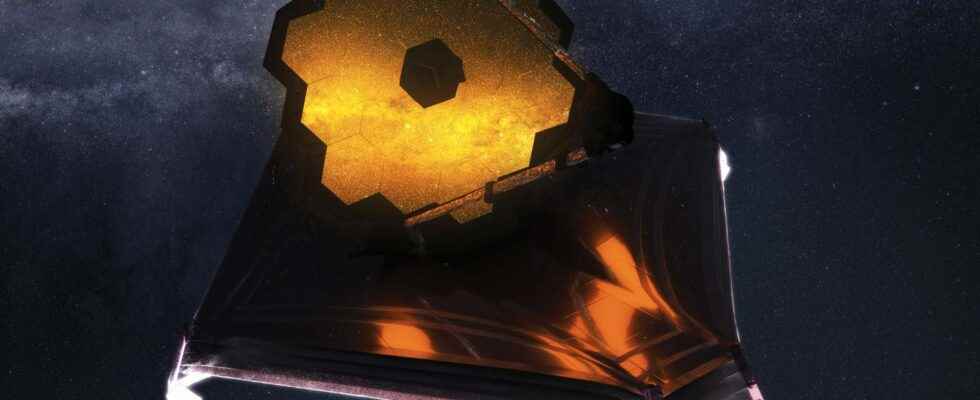The end of 20 years of waiting and a long journey of 1.5 million kilometers in interplanetary space! The largest space telescope in the history of astronomy will orbit Lagrange point L2 tonight at 9 p.m. Here’s what that means.
Imagined in the 1990s, the James Webb Space Telescope (JWST)the largest telescope spacecraft ever conceived crossed the decades until its historic launch on December 25 aboard an impressive Ariane 5 from Kourou, French Guiana. Impressive by its size, by the power of the take-off that we got to live live on Futura, but also by its precision! Ariane ejected the JWST out of Earth’s gravitational influence with so few trajectory errors that the telescope was able to save fuel and provide twice the expected lifespan by scientists and engineers!
Indeed, once started, Newton is in charge,” as Tom Hanks said in Apollo 13, no need to turn on the motors, the trajectory is determined by the speed of the machine. As perfect precision is impossible, interplanetary probes like the James-Webb are equipped with their own rocket engine which they light only briefly once or twice during the trip to make slight trajectory corrections.
An interplanetary car park
The interplanetary trajectory of the JWST is calculated to deposit it at the Lagrange point L2, but like any destination, if you have accelerated, you have to brake! In space, this results in reaching an altitude, and staying there so as not to go back, or on the contrary to exceed its destination. This evening, it is 1.5 million kilometers from Earth that the James-Webb will reach the long-awaited point L2 and will turn on its engines to position itself there. orbit and join its new companions, the telescopes Gaia and Spektr-RG already there. The event is broadcast (in English) by the Nasa on Youtube.
The event can be viewed on YouTube. © NASA, YouTube
Once parked, the next objective will be to complete the cooling in order to be able to carry out the first tests of the instruments in a few weeks, and finally, to take the first shots of the deep cosmos.
An unstable destination
Unlike other telescopes like Hubblethe JWST is not in Earth orbit, but revolves around the sun, like a asteroid or a planet. More specifically, it is aimed at Lagrange point L2 of the earth. The Lagrange points are areas of space where there is a certain gravitational balance between two stars. For the JWST, these are the points between the Earth and the Sun, but these equilibrium zones are found in the same way between the Moon and the Earth, which will moreover be exploited by the future lunar space station Gateway.
When a craft is placed on a Lagrange point of the Earth, it revolves around the Sun at the same speed as our Planet, which allows it to keep a fixed distance throughout the year, unlike other planets by example, which approach then move away periodically, until they are diametrically opposite the Sun with respect to us. This has an advantage for telecommunications and the transmission of the heavy photographic and spectral data that will send us the telescope. The L2 point has an additional advantage, it is a point located in the Earth-Sun axis, and on the far side of the Sun with respect to the Earth. As it is perfectly on axis, the Earth eclipses our star and makes it possible to greatly reduce the radiation received by the heat shield and the observation instruments, the telescope is thus plunged into perpetual darkness.
A probe at the Lagrange point L2 orbits around it, like a satellite orbits a planet
However, just placing a contraption in this area is not enough to waltz in harmony with the Earth, as it will only last temporarily. The forces in play will naturally push objects away from the Lagrange point L2 and break the balance, like a spinning top that no longer spins. If the Lagrange zone is similar to a hill, the Lagrange point is its summit: the telescope is attached to the summit by a rubber band, but this one lets go after a while, so as not to roll down the slope , the craft will have to stay close to the top by regularly firing its thrusters, which is why the lifespan is determined by the fuel of the probe. In reality, a probe at the Lagrange point L2 orbits around it, like a traditional satellite revolves around a planet, although here it does not revolve around… anything.
Interested in what you just read?
